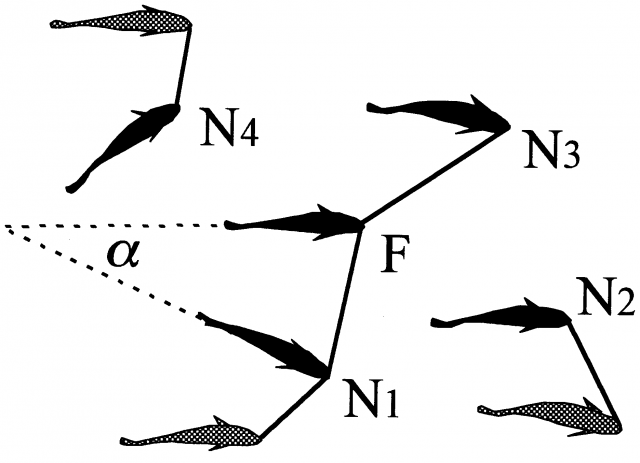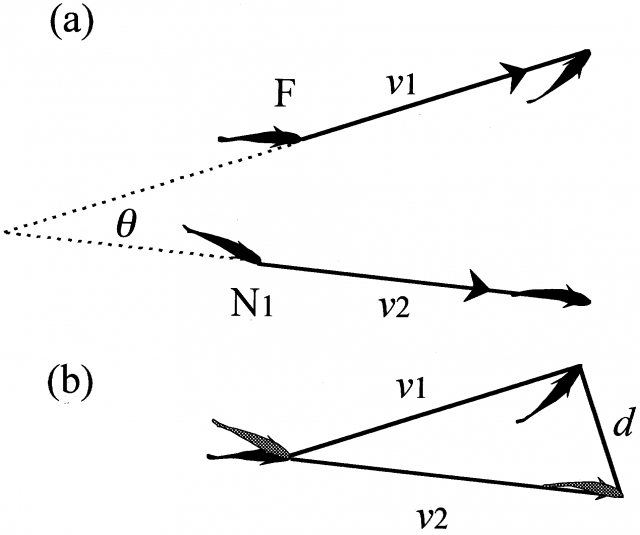Shoaling: species number, behaviors, and science
- Thread starter Tifftastic
- Start date
You are using an out of date browser. It may not display this or other websites correctly.
You should upgrade or use an alternative browser.
You should upgrade or use an alternative browser.
It definitely does change between environments, which is why in my study I am looking at the differences in NND when individuals are reared in the natural maternal environment of the buccal cavity compared to individuals that are reared in a flask. The best we can hope for with most of these studies is to determine a difference between the most ideal system we can give them and a change in that system. We won't know true behaviors that fish would exhibit in the wild, but we will know how it changes with exposure to different situations and stimulus in the lab.
Development of schooling behavior in Spanish mackerel Scomberomorus niphonius during early ontogeny
Background: Early predator detection and predator confusion are two main purposes of schooling in fish. Such benefits are suggested to be the cause for shoaling behavior. Spanish mackerel are piscivorous fish that form schools from juvenile to adult life stages.
Methods: 20,000 Spanish mackerel eggs, obtained from a hatchery in Japan. 10,000 larvae were reared in three seperate 500 L (132 gal tank) at the Fisheries Research Station of Kyoto University. Video recording of the fish, from above, began on day 7 and continued to day 23. "Four parameters of schooling were defined for video analysis as separation angle (SA), nearest neighbor distance (NND), separation swimming angle (SSA) and separation swimming index (SSI)."
- NND= the distance between a focal fish and the fish nearest to it
- SA= the angle between the body axis of the same two fish
- SSA= vector of movement determined from 1s of swimming, SSA is the angle made by the two vectors
- SSI= "the starting points of the neighboring fish vector was parallel-translated to that of the focal fish, then the distance of the endings of two vectors was divided by the average length of two vectors"

"Measurements of separation angle (SA) and nearest neighbor distance (NND). SA (a in this figure)
was defined as the angle made by body axes of the focal fish (F) and the neighboring fish (N1). NND, represented by solid lines, were measured from the focal fish and four other adjacent individuals (N1–N4)."

Measurements of separation swimming angle (SSA) and separation swimming index (SSI). Movements
of the focal fish and the neighboring fish in 1 s were expressed as vectors (v1 and v2). SSA (q) was defined as the angle made by v1 and v2 (a). The latter vector was then parallel-translated to give the separation distance (d ) of two vectors (b). SSI was defined as 2d/(v1 + v2).
Results:
- First observed schooling: day 17
- Separation angle decreased with age
- NND ranged from 2.6 to 4.4 x the standard length of the fish from day 7 to 71
- NND decreased to 2.1 x the standard length on day 18
- NND decreased to 1.5 x the standard length or lower on days 19 and later
- SSA and SSI decreased from day 17 to 19
- SSI stabilized on day 19 to 0.6-0.8
Conclusions:
NND is commonly reported to be 1.0 the SL or lower, making these fish not as tight of schoolers as others studied. It is possible that the larger NND values relate to the piscivorous feeding habits of Spanish mackerel. Further, the late forming of schools could also be due to the piscivorous habit.
Masuda, R., Shoji, J., Nakayama, S. & Tanaka, M. (2003) Development of schooling behavior in Spanish mackerel Scomberomorus niphonius during early ontogeny. Fisheries Science, 69, 772–776.
What the authors didn't cover in discussion:
The late forming of schools, may not be late if the fish are slower to develop. The lateral line has been suggested to be what allows fish to school and the development of this sensory tool may be slower in these fish. I, personally, would like to see this study relate the development of the behavior of these fish to the physical development to make more sense of it. The fish were in a very densely stocked environment and the author's didn't report the standard length of the fish, not even once. The fish in my study are 10-12 mm at the time I take my measures, which begins at day 15 or 16, and they look very crowded with even 20 of them in my 31 L temporary tanks. The fish in this study are much larger species and should be much larger at this age. Can you imagine 3000 juvenile mackerel in a 132 gallon tank? Even if the fish are only an inch at this age, that would take up a lot of space and could contribute to the tightness of schools. However, the numbers are slightly more appropriate to what would be found in a wild school, even though the brood was split three ways or more.
However, the authors still found that at fish aged the shoals became tighter. The question here is, is that increase in tightness related to the increase in the size of the fish and possible "crampedness" of the artificial environment? Its hard to say, and leaves an area that should be studied
Does size of the environment and density levels of kin effect shoal cohesion in juvenile fish?
In the realm of biological publications shoaling is staying together in a group, typically for safety, while schooling is the group swimming together in unison. I am very aware of the differences having just submitted a master's dissertation on the topic. But I am glad that you brought it up as I meant to clarify the differences.
Thanks for the compliment Rufioman, but I am, by no means, an expert. Not even once I have that PhD in my hand will I call myself that. I just have access to a lot of scientific journals at the moment and have a been studying shoaling and schooling behavior since April. I still have a lot to learn!
Schooling and learning: early social environment predicts social learning ability in the guppy, Poecilia reticulata
Chapman, B.B., Ward, A.J.W., and Krause, J.
Animal Behaviour
2008; 76: 923-929
Chapman, B.B., Ward, A.J.W., and Krause, J.
Animal Behaviour
2008; 76: 923-929
Guppies used were 60 days old and were the first generation offspring of wild caught individuals. Fish were reared in low densities (1-4 individuals) or high densities (7-12 individuals). Assays were completed for shoaling tendency, mazes, and foraging foraging as well as growth monitored.
Interestingly, fish that were reared either alone or in densities of 3-4 did not show any difference in social foraging or social learning ability.
How I interpret this for the hobbyist: if you have a single guppy or a small group of guppies, the important behaviors that effect foraging and learning will not be impacted. This fights with the suggestion that you should have at least three guppies as a single will be too stressed. A stressed fish will not learn, nor will it forage (eat). When you have fish in lower numbers like these there is no difference between having them alone as far as the behaviors monitored here are concerned.
Between high and low density treatments there was no difference in mortality.
Again, this can go back to stress. Stress typically increases mortality. Here these results indicate that there is not difference in stress related deaths of groups of small numbers (up to 4) or slightly larger numbers (up to 12).
There were no differences in body size of fish between the two treatments.
This would suggest that both groups were foraging equally and had similar growth regulating hormone levels.
Shoaling behavior however, was impacted by treatment. Fish that were in smaller groups had a stronger tendency to shoal than those in the larger ones.
Guppies kept in smaller groups will hang out together more than if you have a larger group in your tank.
Fish that were reared at lower densities learned better in a social situation, in this case they followed a demonstrator to a food source, than those that were reared at higher densities. When fish were given a similar task individually, those reared in lower densities fed quicker than those raised in higher densities.
This suggests that its actually better to keep guppies in a single or small group than in larger shoals as far as these behaviors are concerned.
In the discussion the authors suggest that while shoaling in guppies (and other species) is highly heritable, it is also flexible. The plasticity (flexibility) is based on early social environment and what those fish experienced while developing.
In thinking about this in respect to a fish keeper: the guppies you buy from a big box store or a large breeder will have been reared in VERY large shoals. If the results presented by Chapman et al. (2008) are to be considered then the guppies you have will typically be fairly asocial and would benefit more from being kept in low numbers or singly than in large groups. However, if you reared your own guppies, or got them from a friend, then you might have guppies that would prefer to be in larger shoals as they will have a stronger tendency to remain close to other individuals of the same species, yet they would still prefer to be in smaller groups than most keepers would suggest.
Interesting stuff if you ask me!
Last edited:


